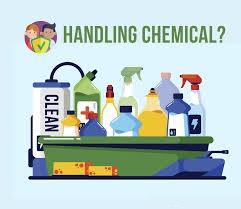Chemicals are substances made up of matter that have a specific composition and structure. They are all around us—in the air we breathe, the food we eat, the water we drink, and the products we use every day. While the word “chemical” sometimes carries a negative meaning, chemicals are essential to modern life and can be both beneficial and harmful depending on how they are used.
- Types of Chemicals
There are two main categories of chemicals: natural and synthetic.
- Natural chemicals occur in nature without human intervention. Examples include water (H₂O), oxygen (O₂), and glucose (C₆H₁₂O₆), which is a sugar found in fruits.
- Synthetic chemicals, on the other hand, are man-made in laboratories or industrial settings. These include plastics, medicines, cleaning agents, and many agricultural products such as fertilizers and pesticides.
Chemicals can also be classified based on their structure, function, or state of matter—solid, liquid, or gas. Common examples include acids, bases, salts, and organic compounds like alcohols and hydrocarbons.
- Importance and Everyday Uses
Chemicals play a vital role in nearly every industry:
- In agriculture, fertilizers and pesticides help increase crop yields.
- In medicine, chemicals are used to develop life-saving drugs, vaccines, and medical devices.
- In cleaning, household products like bleach, soap, and disinfectants rely on chemical reactions to kill germs and remove stains.
- In industry, chemicals are used to manufacture materials like plastics, paints, textiles, and electronics.
Even our bodies rely on chemical processes. Digestion, respiration, and brain function all involve complex chemical reactions.
- Safety and Environmental Concerns
Despite their benefits, some chemicals can be dangerous to human health and the environment if not handled properly. Toxic chemicals can cause poisoning, burns, respiratory issues, and even cancer with long-term exposure. Improper disposal of chemical waste can pollute soil, air, and water sources.
Therefore, it is essential to follow chemical safety guidelines, including:
- Reading and following product labels
- Using protective equipment (gloves, masks, goggles)
- Storing chemicals properly
- Disposing of chemicals according to local regulations
Governments and international organizations regulate the use of harmful chemicals to protect people and ecosystems. Examples include bans on certain pesticides, limits on industrial emissions, and safety standards for chemical transportation and storage.
Conclusion
Chemicals are an inseparable part of our lives, offering countless benefits when used responsibly. Understanding their properties, applications, and potential hazards is crucial for using them safely and sustainably. With proper education and regulation, we can continue to benefit from chemicals while minimizing their risks to health and the environment.
Jika kamu ingin versi PDF, infografik, atau artikel bertema khusus (misalnya tentang bahan kimia berbahaya atau kimia dalam makanan), saya bisa bantu juga.





